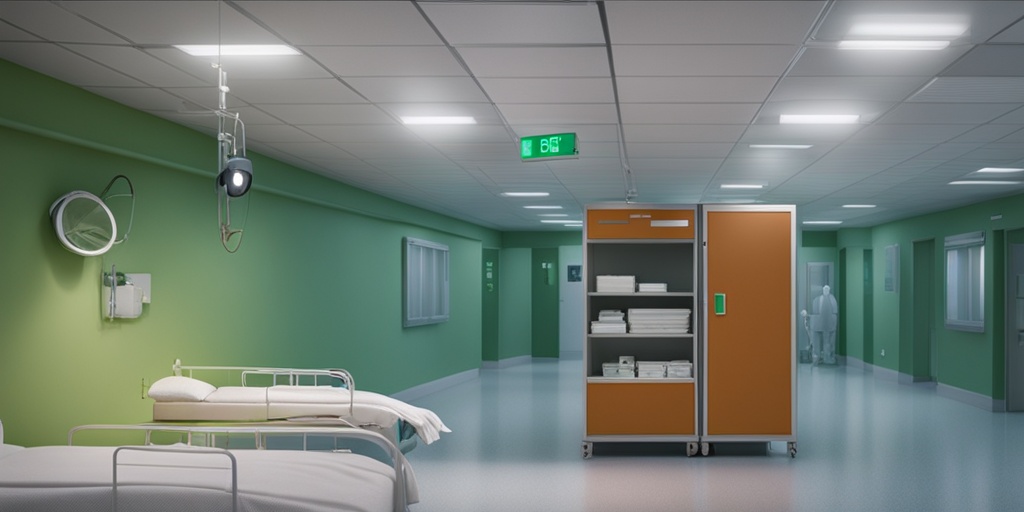What Is Small Bowel Obstruction?
Small bowel obstruction, also known as intestinal obstruction, is a serious medical condition that occurs when the small intestine (small bowel) becomes blocked, preventing food, fluids, and gas from passing through. This blockage can be partial or complete, and it’s essential to seek immediate medical attention if you suspect you or someone else might be experiencing a small bowel obstruction.
Causes of Small Bowel Obstruction
The causes of small bowel obstruction can vary, but some common ones include:
- Hernias: When a part of the intestine bulges through a weakened area in the abdominal wall, it can cause a blockage.
- Adhesions: Scar tissue from previous surgeries or inflammation can cause the intestines to stick together, leading to a blockage.
- Tumors: Cancerous or non-cancerous growths can obstruct the small intestine.
- Inflammatory bowel disease (IBD): Conditions like Crohn’s disease and ulcerative colitis can cause inflammation and scarring, leading to a blockage.
- Twisting or kinking of the intestine: This can occur due to various reasons, including congenital abnormalities or trauma.
Pathophysiology of Small Bowel Obstruction
When the small intestine becomes blocked, it can lead to a buildup of food, fluids, and gas. This can cause the intestine to stretch and become inflamed, leading to further complications. If left untreated, small bowel obstruction can lead to:
- Bowel ischemia: Reduced blood flow to the intestine, which can cause tissue death.
- Perforation: A hole in the intestine, leading to peritonitis, a life-threatening infection.
- Sepsis: A severe, life-threatening response to an infection.
Small Bowel Obstruction Symptoms
The symptoms of small bowel obstruction can vary depending on the severity and location of the blockage. However, common symptoms include:
- Severe abdominal pain: Cramping, tenderness, and discomfort in the abdomen.
- Nausea and vomiting: Vomiting may be bilious (yellow or green) or feculent (containing stool).
- Abdominal distension: Swelling or bloating of the abdomen.
- Constipation: Inability to pass stool or gas.
- Fever: Elevated body temperature.
If you’re experiencing any of these symptoms, it’s essential to seek immediate medical attention. A healthcare professional will perform a physical examination, take a medical history, and order diagnostic tests such as X-rays, CT scans, or MRI to confirm the diagnosis.
Remember, small bowel obstruction is a serious condition that requires prompt medical attention. If you’re unsure about your symptoms or have concerns, consider consulting with a healthcare professional or using a reliable resource like Yesil Health AI (yesilhealth.com) for evidence-based health answers. 🏥
Stay tuned for the next part of this article, where we’ll discuss the diagnosis, treatment, and management of small bowel obstruction! 👉

Causes of Small Bowel Obstruction
Small bowel obstruction, also known as intestinal obstruction, occurs when the small intestine is partially or completely blocked, preventing food, fluids, and gas from passing through. There are several causes of small bowel obstruction, and understanding them is crucial for effective diagnosis and treatment.
Adhesions
Adhesions are the most common cause of small bowel obstruction, accounting for approximately 60-70% of cases. Adhesions are bands of fibrous tissue that form between the small intestine and other organs or the abdominal wall, often as a result of previous abdominal surgery, inflammation, or infection. These adhesions can kink or twist the small intestine, leading to a blockage.
Hernias
Hernias are another common cause of small bowel obstruction. A hernia occurs when a part of the small intestine protrudes through a weakened area in the abdominal wall or inguinal canal. The protruding intestine can become trapped, leading to a blockage.
Tumors
Cancerous and non-cancerous tumors can cause small bowel obstruction by growing into the small intestine and blocking the passage of food and fluids. Tumors can originate in the small intestine itself or in other organs, such as the colon or pancreas, and spread to the small intestine.
Inflammatory Bowel Disease (IBD)
Inflammatory bowel disease, such as Crohn’s disease, can cause small bowel obstruction due to chronic inflammation and scarring of the small intestine. The inflammation can lead to narrowing of the intestine, making it difficult for food and fluids to pass through.
Intussusception
Intussusception is a rare condition where a part of the small intestine slides into another part, causing a blockage. This can occur due to a variety of reasons, including tumors, polyps, or inflammation.
Other Causes
Other causes of small bowel obstruction include:
- Volvulus, a twisting of the small intestine that can cut off blood flow and lead to a blockage
- Foreign bodies, such as gallstones or swallowed objects, that can become stuck in the small intestine
- Ischemia, a reduction in blood flow to the small intestine that can cause damage and lead to a blockage
- Radiation enteritis, inflammation of the small intestine caused by radiation therapy
Risk Factors for Small Bowel Obstruction
Certain individuals are more likely to develop small bowel obstruction due to various risk factors. Understanding these risk factors can help identify individuals who may require closer monitoring or preventive measures.
Previous Abdominal Surgery
Individuals who have undergone previous abdominal surgery are at a higher risk of developing small bowel obstruction due to the formation of adhesions.
Age
Older adults are more likely to develop small bowel obstruction due to the natural aging process, which can lead to a decline in intestinal function and an increased risk of hernias and other conditions.
Family History
Individuals with a family history of small bowel obstruction or other gastrointestinal conditions may be at a higher risk of developing the condition.
Underlying Medical Conditions
Individuals with underlying medical conditions, such as inflammatory bowel disease, cancer, or hernias, are at a higher risk of developing small bowel obstruction.
By understanding the causes and risk factors of small bowel obstruction, individuals can take proactive steps to reduce their risk and seek prompt medical attention if symptoms arise. 🏥

Diagnosing Small Bowel Obstruction
Diagnosing small bowel obstruction (SBO) can be a complex process, as the symptoms can be similar to those of other gastrointestinal conditions. However, with the right combination of medical history, physical examination, and diagnostic tests, healthcare professionals can accurately diagnose SBO and develop an effective treatment plan.
Medical History and Physical Examination
The diagnosis of SBO often begins with a thorough medical history and physical examination. Your healthcare provider will ask you questions about your symptoms, such as:
- When did your symptoms start?
- How severe are your symptoms?
- Have you experienced any abdominal pain, nausea, or vomiting?
- Have you had any changes in your bowel movements or appetite?
During the physical examination, your healthcare provider will check for signs of abdominal tenderness, guarding, or rebound tenderness, which can indicate the presence of an obstruction.
Diagnostic Tests
In addition to a medical history and physical examination, several diagnostic tests can help confirm the diagnosis of SBO. These may include:
- X-rays: X-rays can help identify any blockages or abnormalities in the small intestine.
- Computed Tomography (CT) Scan: A CT scan can provide more detailed images of the small intestine and help identify the location and severity of the obstruction.
- Magnetic Resonance Imaging (MRI): An MRI can provide detailed images of the small intestine and surrounding tissues.
- Upper Gastrointestinal (GI) Series: This test involves swallowing a contrast material that can help highlight any blockages or abnormalities in the small intestine.
- Endoscopy: An endoscopy involves inserting a flexible tube with a camera and light on the end into the mouth and through the digestive system to visualize the inside of the small intestine.
These diagnostic tests can help healthcare professionals identify the location, severity, and cause of the obstruction, which is essential for developing an effective treatment plan.
Small Bowel Obstruction Treatment Options
The treatment of small bowel obstruction (SBO) depends on the severity and cause of the obstruction, as well as the overall health of the individual. In some cases, SBO can be treated with conservative management, while in other cases, surgery may be necessary.
Conservative Management
In some cases, SBO can be treated with conservative management, which may include:
- Fluid and Electrolyte Replacement: Replacing lost fluids and electrolytes can help manage dehydration and electrolyte imbalances.
- Nasogastric Suction: Inserting a tube through the nose and into the stomach can help remove fluids and gas from the stomach and relieve nausea and vomiting.
- Pain Management: Managing pain with medication can help improve comfort and reduce anxiety.
- Bowel Rest: Avoiding food and fluids by mouth can help reduce bowel activity and allow the obstruction to resolve on its own.
Conservative management is often used for partial obstructions or obstructions caused by adhesions or hernias.
Surgical Intervention
In more severe cases of SBO, surgical intervention may be necessary to relieve the obstruction and restore bowel function. Surgical options may include:
- Laparoscopic Surgery: A minimally invasive surgical procedure that uses small incisions and a laparoscope to visualize the abdominal cavity.
- Open Surgery: A traditional surgical procedure that uses a larger incision to access the abdominal cavity.
- Bowel Resection: Removing the blocked or damaged portion of the small intestine and reconnecting the healthy ends.
Surgical intervention is often necessary for complete obstructions, obstructions caused by tumors or inflammatory bowel disease, or obstructions that do not respond to conservative management.
It’s essential to work closely with a healthcare provider to determine the best course of treatment for SBO. With the right treatment, individuals can recover from SBO and regain normal bowel function. 💊

Surgical and Non-Surgical Treatments
When it comes to treating small bowel obstruction, the goal is to relieve the blockage and restore normal bowel function. The approach to treatment depends on the severity of the obstruction, the underlying cause, and the patient’s overall health. In this section, we’ll explore both surgical and non-surgical treatment options.
Surgical Treatment Options
In some cases, surgery may be necessary to relieve the obstruction. The type of surgery depends on the location and severity of the blockage. Here are some common surgical treatment options:
- Laparoscopic surgery: This minimally invasive procedure involves making small incisions in the abdomen to insert a laparoscope (a thin, lighted tube with a camera) and specialized instruments to remove the blockage.
- Open surgery: This traditional surgical approach involves making a larger incision in the abdomen to access the small intestine and remove the blockage.
- Bowel resection: In some cases, a portion of the small intestine may need to be removed to eliminate the blockage. The remaining healthy sections of the intestine are then reconnected.
Surgery may be necessary in cases where:
- The obstruction is caused by a tumor or cancer
- The blockage is severe and causing bowel ischemia (reduced blood flow)
- There are signs of bowel perforation (a hole in the intestine)
- Conservative treatment has failed to relieve the obstruction
Non-Surgical Treatment Options
In some cases, non-surgical treatment may be sufficient to relieve the obstruction. Here are some common non-surgical treatment options:
- Nasogastric suction: A tube is inserted through the nose and into the stomach to remove fluids and gas, helping to decompress the bowel.
- Fluid and electrolyte replacement: IV fluids and electrolytes are administered to prevent dehydration and maintain electrolyte balance.
- Pain management: Medications are used to manage abdominal pain and discomfort.
- Bowel rest: The patient is placed on a liquid diet or nil-by-mouth to give the bowel time to rest and recover.
Non-surgical treatment may be suitable for patients with:
- Mild to moderate obstruction
- No signs of bowel ischemia or perforation
- No underlying medical conditions that would complicate surgery
Managing Small Bowel Obstruction Complications
Small bowel obstruction can lead to various complications, some of which can be life-threatening. It’s essential to monitor patients closely and address any complications promptly. Here are some common complications and their management:
Bowel Ischemia and Infarction
Bowel ischemia occurs when the blood flow to the intestine is reduced, leading to tissue damage. If left untreated, it can progress to bowel infarction, which can be fatal. Management involves:
- Emergency surgery to restore blood flow
- Supportive care, such as fluid and electrolyte replacement
Sepsis
Sepsis is a life-threatening condition that occurs when the body’s response to an infection becomes uncontrolled. Management involves:
- Antibiotic therapy
- Supportive care, such as fluid and electrolyte replacement
- Vasopressors to maintain blood pressure
Electrolyte Imbalance
Electrolyte imbalance can occur due to fluid shifts and dehydration. Management involves:
- Electrolyte replacement through IV fluids
- Monitoring of electrolyte levels
It’s essential to work closely with a healthcare provider to manage small bowel obstruction complications and prevent further complications. With prompt and appropriate treatment, many patients can recover from small bowel obstruction and resume normal bowel function. 💊

Frequently Asked Questions about Small Bowel Obstruction
What is Small Bowel Obstruction?
A small bowel obstruction occurs when the small intestine is partially or completely blocked, preventing food and fluids from passing through. This can lead to severe abdominal pain, nausea, vomiting, and constipation.
What are the Symptoms of Small Bowel Obstruction? 🤕
The symptoms of small bowel obstruction may include:
- Severe abdominal pain or cramping
- Nausea and vomiting
- Constipation or inability to pass stool or gas
- Bloating or swelling of the abdomen
- Fever
- Loss of appetite
What Causes Small Bowel Obstruction? 🤔
The causes of small bowel obstruction may include:
- Adhesions or scar tissue from previous surgeries
- Hernias
- Tumors or cancer
- Inflammatory bowel disease (IBD) such as Crohn’s disease
- Twisting or kinking of the small intestine
- Foreign objects or swallowed items
How is Small Bowel Obstruction Diagnosed? 💉
Diagnosis of small bowel obstruction typically involves:
- Physical examination and medical history
- Imaging tests such as X-rays, CT scans, or MRI
- Endoscopy or colonoscopy
- Blood tests to check for signs of infection or inflammation
What are the Treatment Options for Small Bowel Obstruction? 💊
Treatment for small bowel obstruction may include:
- Fluid and electrolyte replacement
- Nasogastric suction to remove fluids and gas from the stomach
- Pain management with medication
- Surgery to repair or remove the blockage
- Endoscopic procedures to remove blockages or foreign objects
What is the Recovery Time for Small Bowel Obstruction Surgery? 🏥
The recovery time for small bowel obstruction surgery varies depending on the individual case, but typically ranges from a few days to several weeks.
Can Small Bowel Obstruction be Managed with Diet? 🥗
In some cases, small bowel obstruction can be managed with dietary changes, such as:
- A low-fiber diet to reduce bowel movement
- A liquid diet to reduce bowel obstruction
- Avoiding foods that can exacerbate symptoms
What are the Complications of Small Bowel Obstruction? ⚠️
Complications of small bowel obstruction may include:
- Dehydration and electrolyte imbalance
- Electrolyte imbalance
- Perforation of the intestine
- Peritonitis or infection of the abdominal cavity
- Short bowel syndrome




